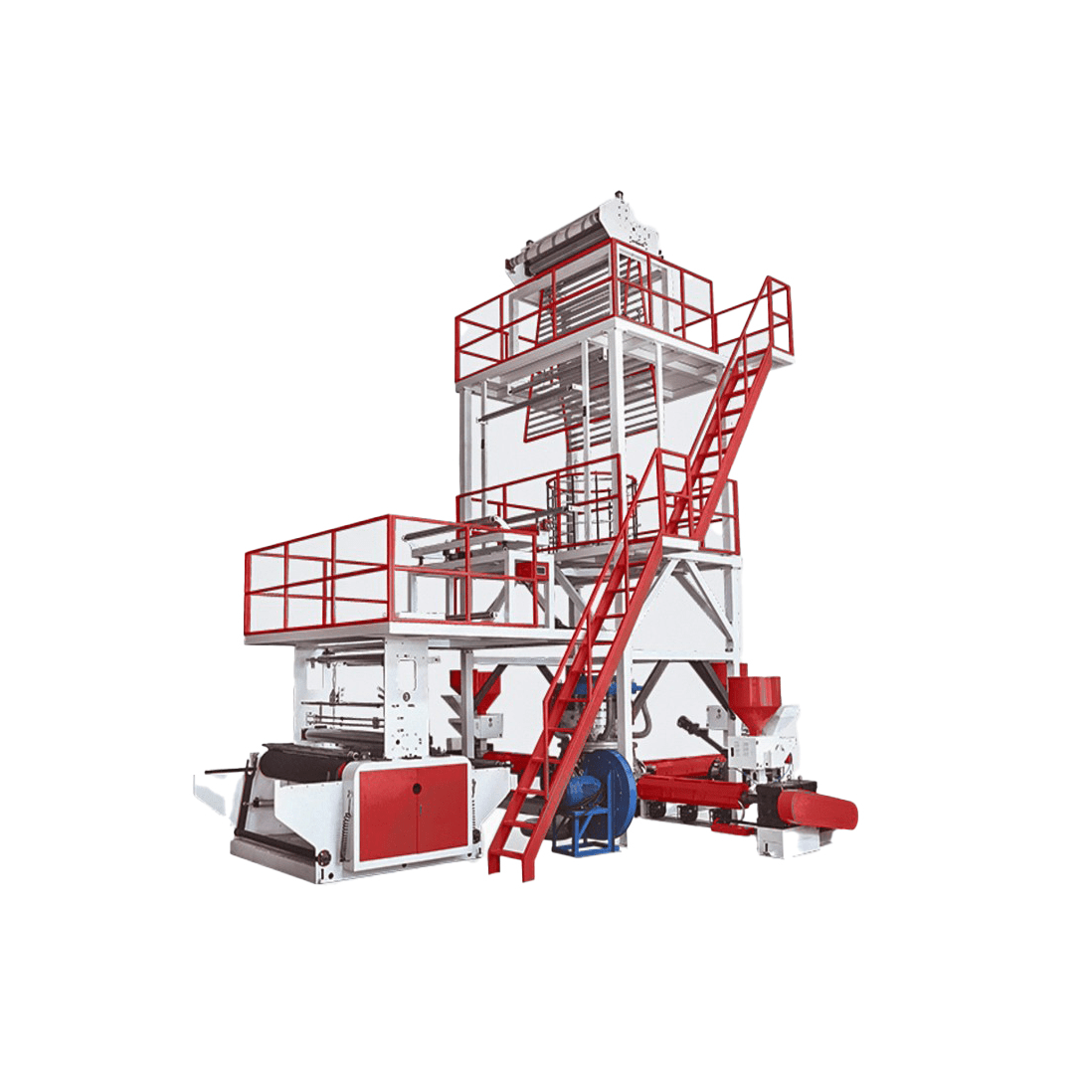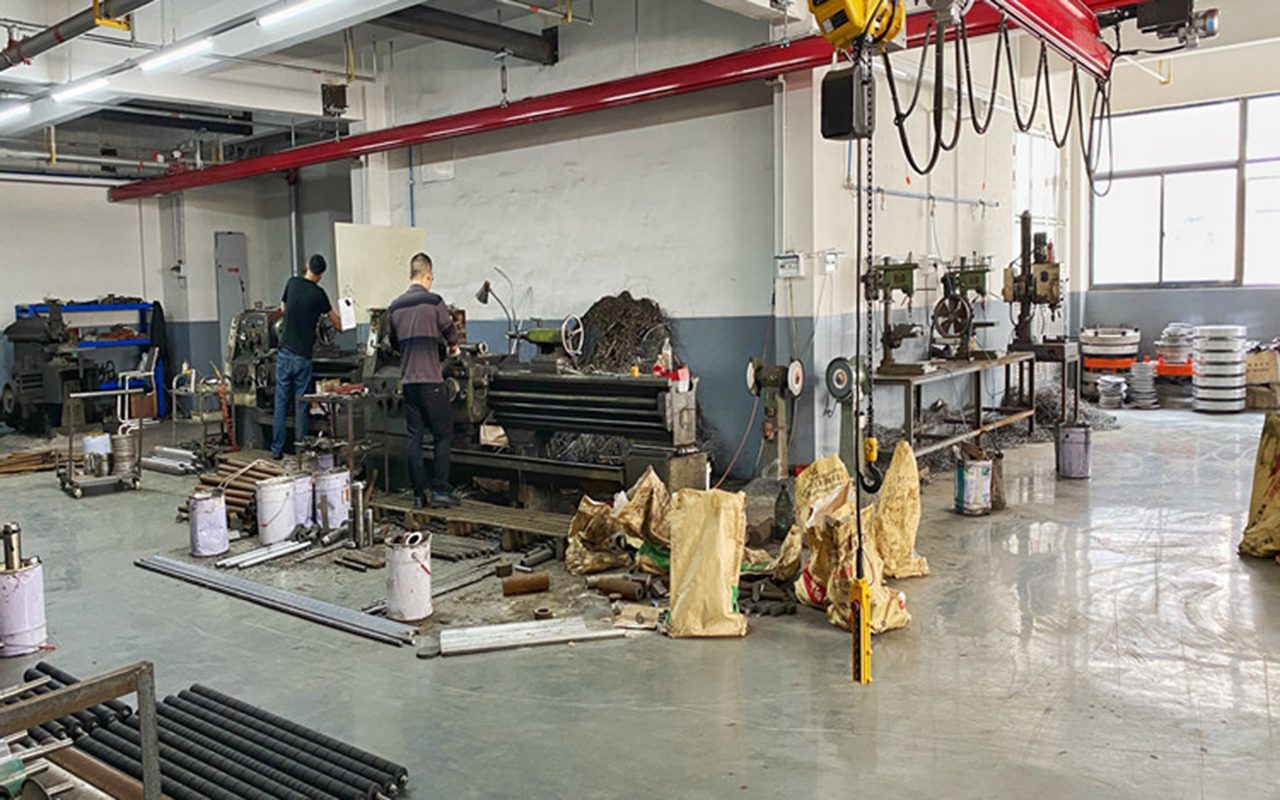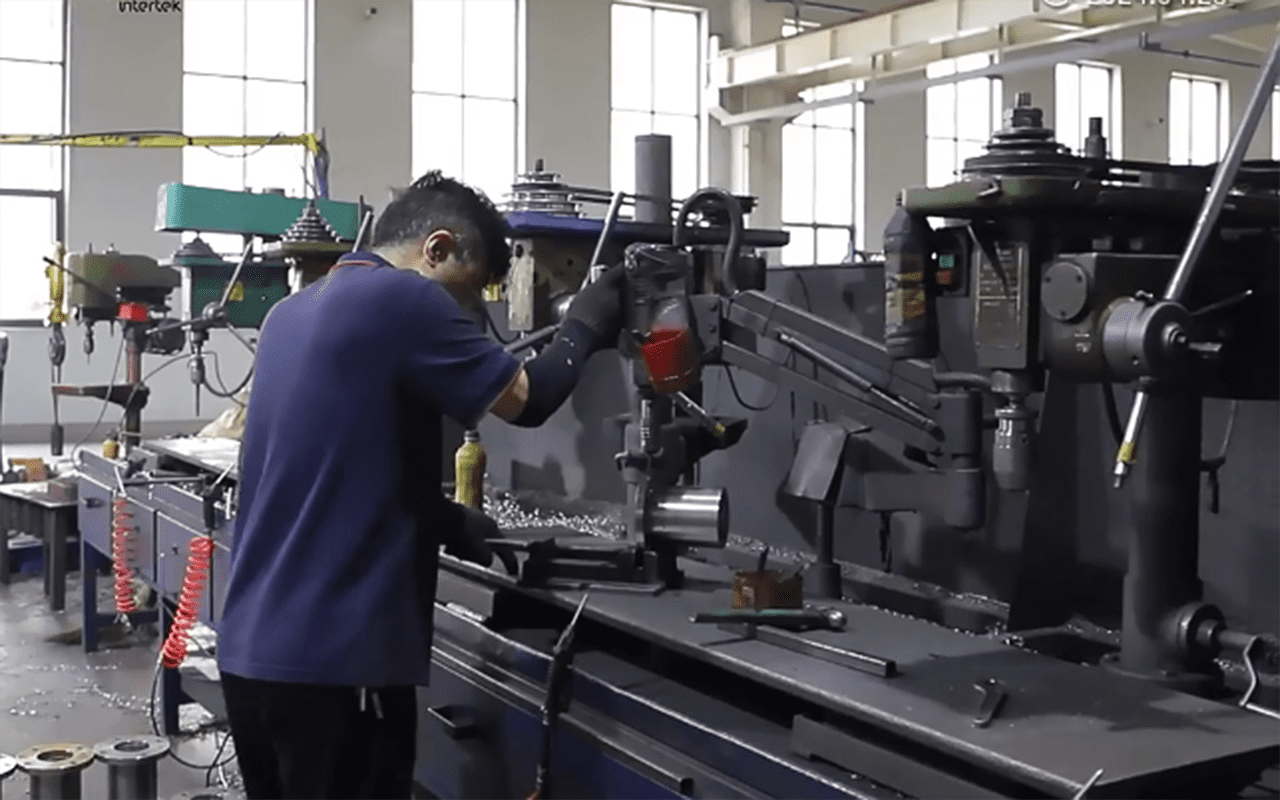- Whatsapp: +8618867802069
- Email: [email protected]

Film blowing machine is a kind of equipment for the production of plastic film, widely used in packaging, agriculture, industry and other fields. The working principle is that the film blowing machine heats and melts the plastic particles through the extruder, extrudes the film bubbles through the die head, and then makes the plastic film through the cooling, traction, winding and other processes.
Versatile Material Processing: The machine can process various plastics, including HDPE, LDPE, LLDPE, PLA+PBAT, and PS, making it a versatile solution for multiple applications.
High-Quality Film Production: With a maximum output of 135kg/h and a take-up speed of 10-140m/min, this machine can produce high-quality film at an impressive rate.
Durable and Reliable Construction: The machine is built with durable core components, including a gearbox, motor, die head, frequency converter, and air blower, ensuring a long lifespan and minimal maintenance.
Comprehensive Warranty and Support: This machine comes with a 3-year warranty for the core components and a 3-year warranty for the entire machine, providing users with peace of mind and dedicated customer support.
| Item | our offer |
| MOQ | 1 set |
| Leading times | 30 working days, depending on the qtys |
| Main product | slitting machine |
| Customize logo | Accept |
| Warranty | 1 year |






A blown film machine is a mechanical equipment used for producing plastic films. Through processes such as extrusion, bulging, cooling and winding, it processes plastic particles (such as PE, PP, PVC, etc.) into films of different thicknesses and widths. This kind of film is widely used in fields such as packaging bags, agricultural mulching films, and industrial protective films.
Extruder: Heat and melt plastic particles and extrude them into tubular preforms through a screw.
Die head (die head) : Controls the extrusion shape of the molten plastic to form tubular film bubbles.
Air ring cooling system: Use cold air to evenly cool the film bubbles to set their shape.
Traction device: Stretch the inflated film and convey it stably.
Winding device: It winds the finished film into a roll for easy storage and transportation.
Control system: Adjust parameters such as temperature, extrusion speed, air volume, and traction speed.
Check the equipment status: Ensure that there are no abnormalities in components such as the extruder, die head, air ring, and traction roller, and that the lubrication system is normal.
Select appropriate raw materials: Choose suitable plastic pellets (such as LDPE, HDPE, etc.) based on production requirements and check if they are dry (preheating and dehumidifying if necessary).
Set process parameters: Input parameters such as temperature (for each section of the barrel and die head), screw speed, air volume of the air ring, and traction speed on the control panel.
Preheating the machine: Start the heating system to raise the temperature of the extruder and the die head to the set temperature (usually taking 20 to 30 minutes).
Startup: After the temperature reaches the set value, start the main motor and run the screw at a low speed to observe the extrusion state of the molten plastic.
Membrane guiding: Manually pull the extruded tubular membrane bubbles upwards, and at the same time introduce compressed air to expand the membrane bubbles. Adjust the cooling air volume of the air ring to ensure uniform cooling.
Adjust the membrane bubble: By regulating the air pressure, traction speed and air volume, control the thickness and width of the film to ensure that the membrane bubble is stable and does not shake.
Formal production: After the film bubbles have stabilized, increase the production speed and monitor the uniformity, transparency and surface quality of the film in real time.
Winding: After the film is leveled by the traction roller, it is automatically wound by the winding machine. Pay attention to adjusting the tension to prevent the film from being too loose or too tight.
Privacy Policy | SiteMap
Copyright Wenzhou Thinki Machinery Co., Ltd.